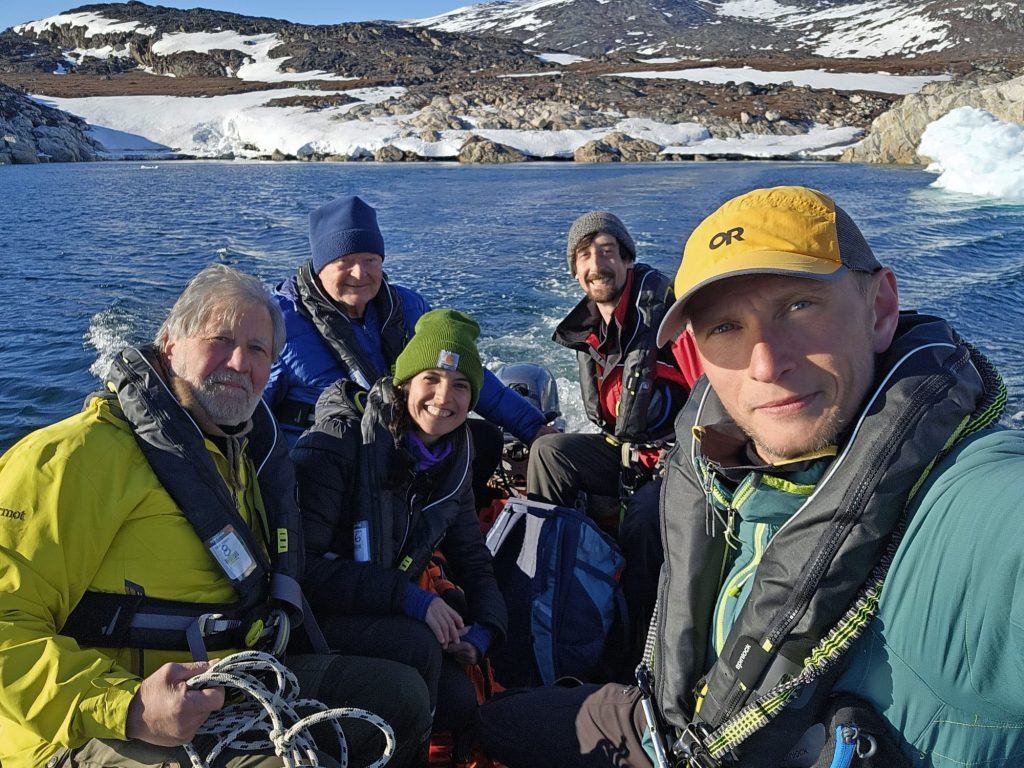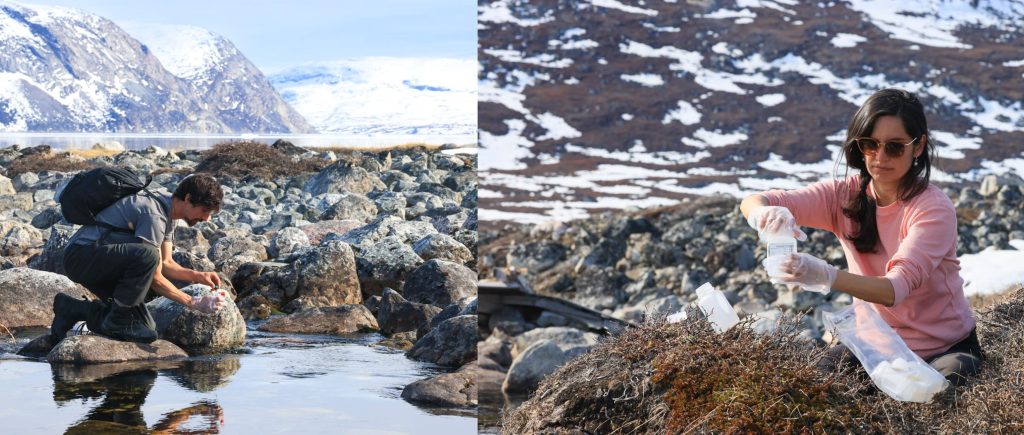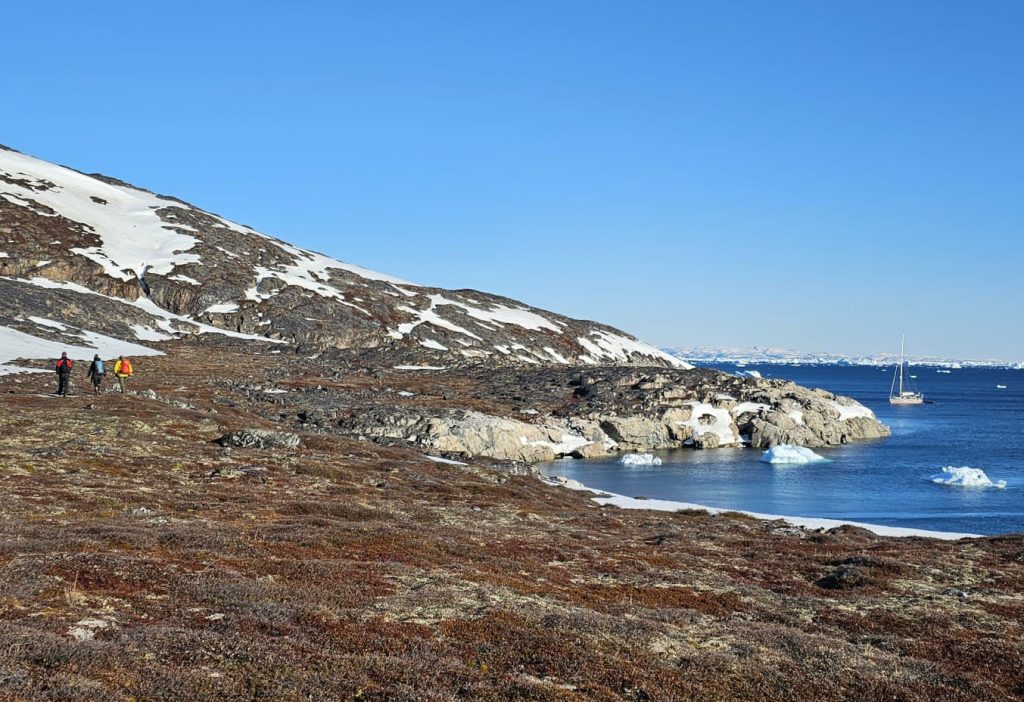
West Greenland Field Expedition (including Sisimiut, Disko, and Ilulissat)
Expedition Dates: May 25 – June 06, 2024
Field Team Members: Dr. Paul Mayewski, Dr. Mariusz Potocki, Alex Kuli, Ligia Naveira, Cory Limberger
From May 25th to June 06th, a field expedition in West Greenland was conducted aboard the sailing vessel ArcticEarth and the Climate Change Institute team. The expedition members, led by the Director Dr. Paul Mayeski, included the UMaine postdoctoral researcher Mariuz Potocki, UMaine graduate students Ligia Naveira and Cory Limberger, and EMT medic Alex Kuli. The team’s goal during the expedition was to collect water samples, which will define a baseline chemistry that will help Greenlanders and others track and understand future human impact in the area.

West Greenland is experiencing significant melting, contending with multiple stressors, from pollution to shifting in hydrological systems, thawing permafrost, and changing ecosystems. The area is also home to Sermeq Kujalleq (also known as Jakobshavn Glacier), one of the few glaciers that extend from the Greenland Ice Sheet to the sea. Every year, it calves approximately 35 km3 of ice, which is 10% of Greenland’s calf ice and more than any other glacier outside of Antarctica.
As the warming increases, and as tourism and resource depletion (e.g., mining) continue to rise, the extent and magnitude of the toxins and chemical compounds being released from Greenland glaciers and their impact on the health of ecosystems and downstream populations, agriculture, and marine ecosystems remains poorly unquantified. Assessing water quality is crucial in this context. By doing so, the team aims to provide local communities with the scientific knowledge they need to make informed decisions and develop effective policies. Moreover, establishing a baseline study will help prevent and monitor future exposure to harmful substances, safeguarding the health and well-being of both the environment and the people who depend on it.
The methodology involves a comprehensive analysis of major ions, stable water isotopes, major and trace elements, and PFAS (per- and polyfluoroalkyl substances, known as “forever chemicals”). The team conducted extensive sampling of meltwater, rivers, streams, snow, seawater, and lakes across the area, which also included measurements of salinity, temperature, and conductivity. The study area comprised remote locations as well as the towns of Sisimiut, Disko, Ilulissat, and Assiat. All of these measurements were taken onboard the vessel ArcticEarth, which has an incredibly skilled crew and is superbly outfitted for arctic conditions.

This is the second reconnaissance season in Greenland. In the first season in South Greenland, preliminary results have highlighted the urgent need for rigorous water quality monitoring, particularly given the detection of elevated levels of lead (Pb) in streams. This toxic element may originate from long-traveled anthropogenic sources, glacial scouring, and steam action beneath the bedrock of the Greenland Ice Sheet.

The commitment and knowledge of the ArcticEarth crew were essential to the success of this expedition. The team extends the sincere gratitude to Captain Magnus Day and Mate Julia Prinselaar for their steadfast assistance and superb navigation. Additionally, heartfelt thanks to Elizabeth Crowley, whose support was instrumental and greatly appreciated.

